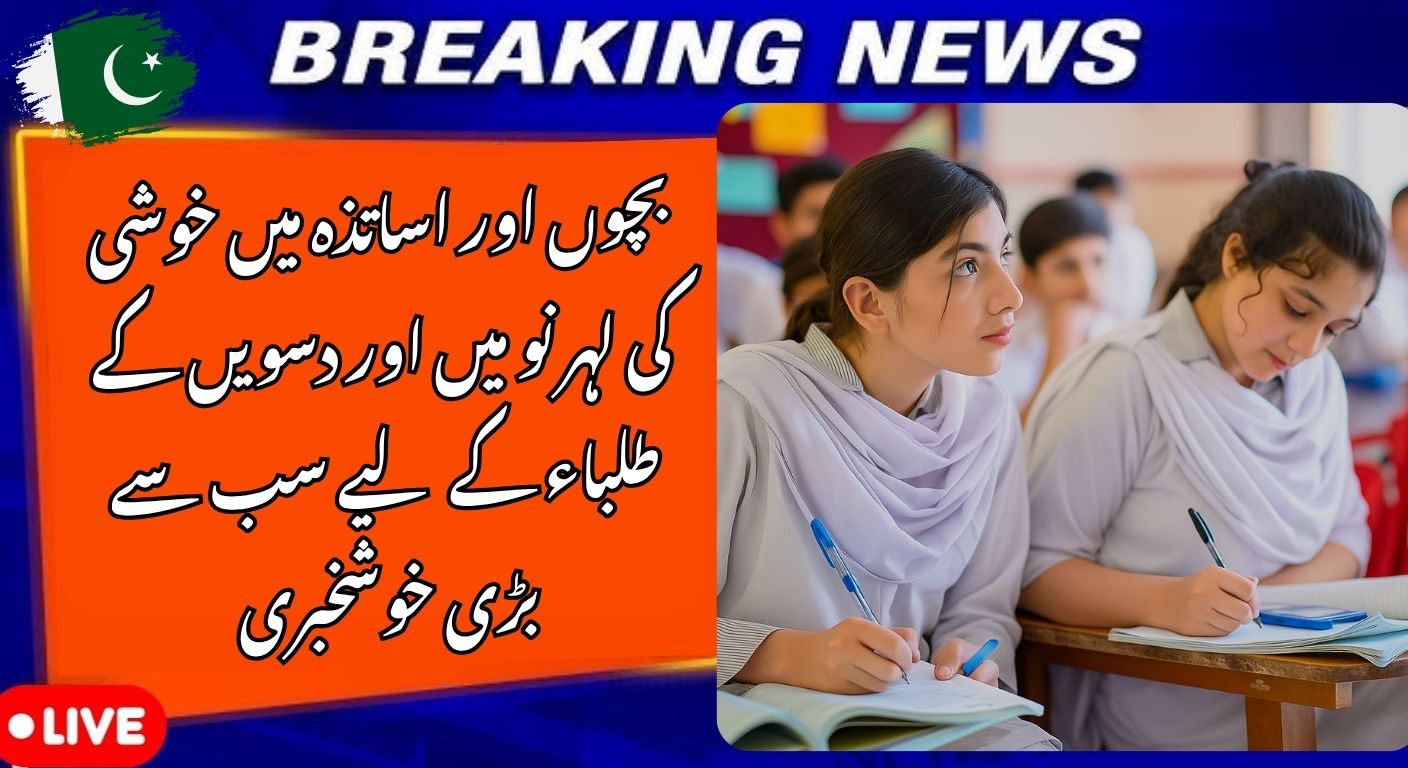The Punjab Government has officially announced a reduced syllabus for Class 9 and 10 annual exams 2025, bringing long-awaited relief for students and teachers. The new “Smart Syllabus 2025” aims to make studies easier, reduce stress, and focus on the most important topics for board exams.
Punjab Education Minister Rana Sikandar Hayat confirmed that the revised syllabus has been uploaded to all Punjab education board websites and the School Education Department’s online portal for easy access.
Why Punjab Reduced the Syllabus
The decision was made after months of consultation with teachers and education experts. Many schools had been struggling to complete lengthy courses within limited teaching days. To solve this, the government decided to simplify and shorten the syllabus.
According to Minister Rana Sikandar Hayat, the purpose of this change is to promote concept-based learning, reduce unnecessary repetition, and ensure equal educational opportunities across the province.
Main Goals of the Syllabus Reduction:
- Lessen academic burden on students
- Focus on key exam-related topics
- Improve understanding and learning quality
- Help teachers manage classroom time effectively
What Is the Smart Syllabus 2025?
The Punjab Smart Syllabus 2025 is a shortened model of the everyday matric curriculum. It removes chapters and sporting events that aren’t vital for board assessments whilst maintaining core subjects intact.
This syllabus applies to all nine educational forums below the Punjab Curriculum and Textbook Board (PCTB) — masking both public and personal faculties.
Applicable Boards Include:
Lahore, Rawalpindi, Faisalabad, Multan, Gujranwala, Sargodha, Bahawalpur, DG Khan, and Sahiwal.
Students can visit their respective board’s website and download the PDF model of the syllabus from the “Notifications” or “Syllabus” phase.
Benefits for Students and Teachers
The reduced syllabus isn’t always only a brief-term exchange; it’s part of a broader attempt to modernize Punjab’s training system.
Key Benefits:
- Less Study Load: Students can give attention to fewer, extra critical subjects.
- Efficient Preparation: Better time management for revision and practice.
- Higher Grades: Focused observe will increase chances of success in board checks.
- Better Understanding: More emphasis on ideas as opposed to memorization.
- Teacher Support: Easier lesson planning and well timed syllabus of entirety.
Subjects Included
The Smart Syllabus 2025 applies to all major matric subjects.
Class 9:
English, Urdu, Islamiat, Pakistan Studies, Mathematics (Science/Arts), Physics, Chemistry, Biology / Computer Science
Class 10:
English, Urdu, Islamiat / Ethics, Pakistan Studies, Mathematics, Physics, Chemistry, Biology / Computer Science
Public Response
Teachers have welcomed the decision, calling it a “student-friendly” move that encourages better classroom learning. Parents also expressed appreciation, saying it will help reduce exam anxiety and create a fair learning environment.
Students, meanwhile, are revising their study schedules and focusing on core topics highlighted in the new syllabus. Education experts recommend using PCTB textbooks and practicing past papers to stay aligned with exam trends.
Future Educational Reforms
The Punjab government has also announced that a smart syllabus for Class 11 will be released soon. Future plans include:
- Digital classrooms and e-learning resources
- AI-based assessments for better evaluation
- Teacher training programs to improve teaching quality
- Global collaboration for modern education standards
How to Download the Smart Syllabus
- Visit your respective Punjab Board’s official website.
- Open the “Notifications” or “Downloads” section.
- Click on “Smart Syllabus 2025.”
- Select your class (9 or 10).
- Download the PDF file for your subjects.
Conclusion
The Punjab Reduced Syllabus 2025 is a progressive move to make education simpler, fairer, and smarter. By cutting unnecessary content and emphasizing core learning, the government aims to improve both student performance and teaching efficiency.












